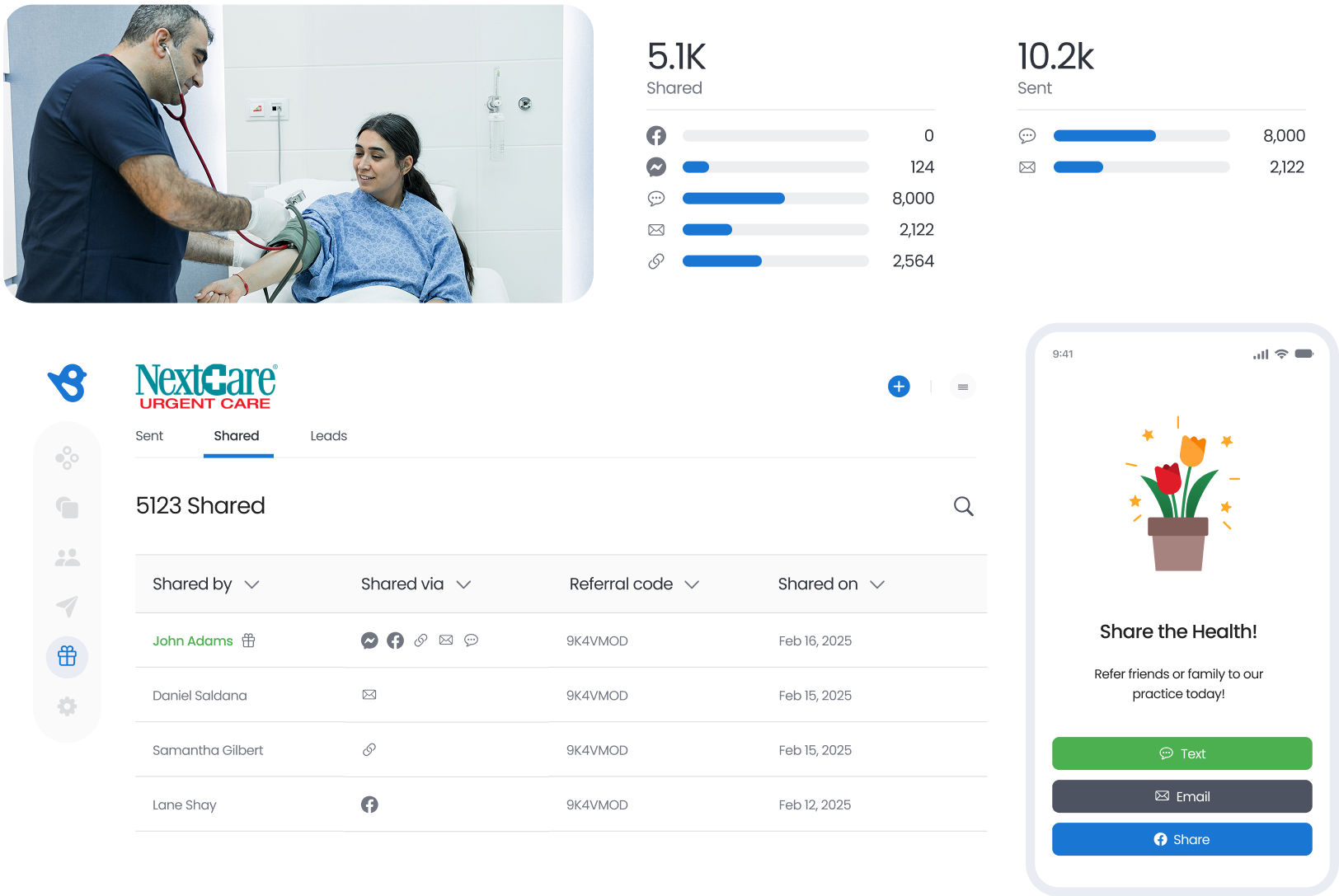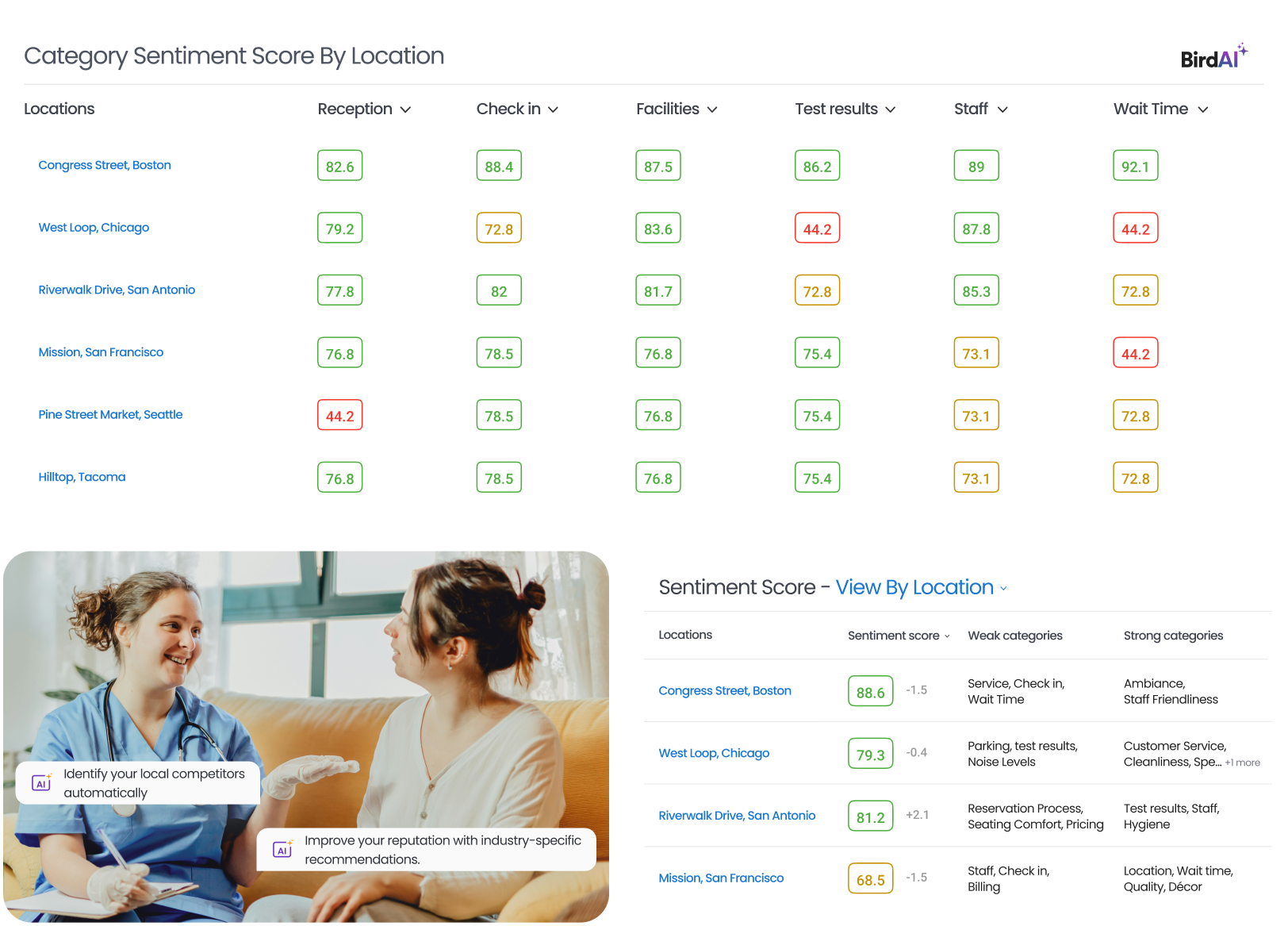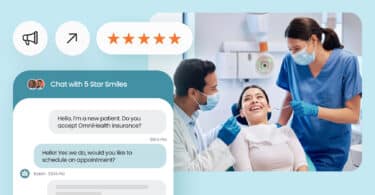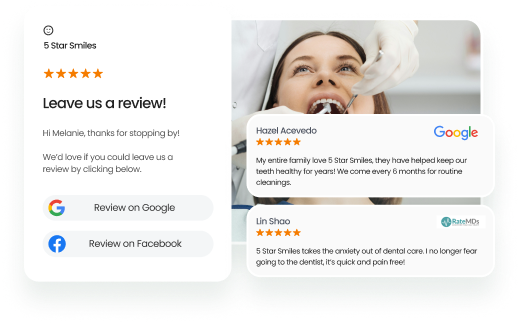How are today’s patients finding your practice? What drives them to choose you over the competition or, worse, to walk away? These questions are more critical than ever as healthcare organizations face rising patient expectations and greater digital competition.
According to Birdeye’s 2025 State of Online Reviews report, over 81% of patients read reviews before choosing a provider. Yet many organizations still lean on outdated or passive methods like print ads and word-of-mouth referrals to grow their patient base. These approaches fall short in an era when patients, especially younger demographics and digitally savvy people, expect transparency, real-time access, and digital convenience.
Like consumers in other industries, healthcare patients research online, read reviews, and compare providers before making contact. Thus, patient acquisition is not just a marketing function but a strategic imperative for sustainable growth.
This blog will explain patient acquisition in the context of modern healthcare, why it’s become so essential to your organization’s future, and which practical strategies can help you attract and keep the right patients over time.
Table of contents
- What is patient acquisition?
- How patient acquisition differs from patient retention
- The benefits of patient acquisition for healthcare practices
- 18 high-impact patient acquisition strategies
- How Wake ENT increased patient acquisition and patient engagement with Birdeye
- Frequently asked questions on patient acquisition
- How Birdeye helps healthcare organizations with patient acquisition
What is patient acquisition?
Patient acquisition is the process of attracting, engaging, and converting potential patients into scheduled appointments. Unlike passive methods such as referrals or walk-ins, modern acquisition relies on proactive strategies like digital marketing, reputation building, and online accessibility.
Because healthcare consumers now evaluate providers online through reviews, websites, and social media, providers must remain visible, credible, and accessible across multiple channels. The most successful acquisition efforts understand their target audience, meet them where they are, and guide them smoothly toward care.
How patient acquisition differs from patient retention
Patient acquisition and retention are often seen as separate priorities, but are most powerful when aligned.
- Acquisition focuses on gaining new patients through marketing and outreach. It often involves a higher upfront cost.
- Retention focuses on maintaining relationships with existing patients through excellent care and communication, often at a lower cost.
However, acquisition alone is not enough. If your practice can’t retain patients, you will be stuck in a costly cycle of constantly finding new ones. Strong retention increases each patient’s lifetime value, making acquisition efforts more sustainable and impactful.
The benefits of patient acquisition for healthcare practices
Implementing effective patient acquisition strategies offers a range of advantages for healthcare organizations. These benefits extend beyond financial gains, helping to improve patient care, boost satisfaction, and elevate the overall digital presence of your practice within the community. By adopting comprehensive approaches to attract new patients, healthcare providers can create a sustainable practice focusing on growth and patient outcomes.
Here are the key benefits of patient acquisition strategies:
1. Increased revenue
Bringing in new patients directly translates to more opportunities for care, leading to increased revenue from services, treatments, and follow-up appointments.
2. Market share growth
Acquiring new patients allows your practice to expand its reach, increasing your market share and enhancing your competitive position within the local healthcare market.
3. Cost-effective growth
As your practice’s reputation grows through positive patient experiences and referrals, you reduce the reliance on expensive marketing efforts, making patient acquisition more cost-efficient in the long run.
4. Improved patient experience
A well-planned acquisition process enhances the patient journey from the first point of contact, ensuring a smoother, more positive experience that encourages retention and satisfaction.
5. Stronger patient loyalty
Through ongoing engagement and personalized care, your practice can build trust with new patients, cultivating loyalty and increasing the likelihood of repeat visits and patient referrals.
6. Enhanced health outcomes
Proactively educating and communicating with patients helps improve their understanding of health conditions, leading to better adherence to treatment plans and improved overall health outcomes.
7. Reduced professional burnout
Streamlined processes and an engaged patient base contribute to a more manageable workflow, resulting in increased job satisfaction for healthcare providers and reduced burnout.
8. Stronger brand reputation
Patient acquisition efforts emphasizing quality care and excellent service contribute to a positive public image. It makes your practice more attractive to prospective patients and referral partners.
9. Improved visibility
Leveraging digital tools such as social media, SEO, and online reviews helps raise awareness about your practice, reaching potential patients who may not have been aware of your services.
10. Informed decision-making
Tracking and analyzing new patient acquisition data allows your practice to make more informed decisions about future strategies, optimize resources, and improve overall effectiveness.
By focusing on proactive outreach, clear communication, and a seamless patient experience, healthcare providers can build a sustainable and thriving practice that meets both business and patient care objectives.
18 high-impact patient acquisition strategies
Attracting new patients to your healthcare practice is essential for growth and long-term success. Implementing targeted patient acquisition strategies helps build awareness, generate leads, and ensure your practice stands out in a competitive healthcare environment.
These strategies range from digital marketing and community outreach to improving patient experiences and leveraging referrals.
Here are several unique and impactful patient acquisition strategies to consider:
Digital marketing and online presence
- Search engine optimization (SEO)
Optimize your website content using healthcare-specific keywords and location-based terms so that your practice appears in top results when potential patients search online. Include clear service pages, relevant blog content, and fast-loading mobile-friendly pages to improve both visibility and user experience.
- Google Business Profile (GBP)
Ensure your Google Business Profile is complete, accurate, and regularly updated. Add high-quality photos, correct service information, and respond to patient queries or reviews. Additionally, maintain accurate listings on platforms like Healthgrades, Yelp, and WebMD. These touchpoints enhance visibility and build trust when patients are researching providers.
- Paid advertising (PPC and display ads)
Use Google Ads and display advertising to target patients based on keywords, location, interests, or online behaviors. This approach helps you reach people actively searching for healthcare services or browsing content related to their health needs. You can quickly control your marketing budget and test messaging and get measurable results.
- Social media marketing
Build trust and awareness by engaging with your audience on platforms like Facebook, Instagram, and LinkedIn. Share health education tips, behind-the-scenes staff stories, patient success videos, and seasonal health reminders. Use paid social campaigns to boost visibility in your target demographic.
- Online reputation management
Encourage patients to leave reviews on trusted platforms like Google, Healthgrades, and Yelp. Respond to all positive or negative reviews to show you value feedback and are committed to improving the patient experience. A strong review presence builds credibility and influences potential patients’ decisions.
- Educational content marketing
Publish blog articles, videos, and infographics that answer common patient questions, explain procedures, and share wellness advice. Content marketing builds authority, increases organic traffic, and gives potential patients confidence in your expertise before they even walk through the door.
- Email marketing and targeted campaigns
Segment your email list by patient type, age group, or service interest and send personalized messages. Promote healthcare services, announce new offerings, share helpful content, or follow up with appointment reminders. Consistent, relevant communication keeps your practice top-of-mind and drives engagement.
Operational improvements that boost acquisition
- Online booking and digital intake
Offer a frictionless scheduling experience by allowing patients to book appointments anytime via your website or mobile device. Digital intake forms streamline the process and reduce wait times. Convenience and control are key expectations for today’s healthcare consumers.
- Practice management software

Use integrated tools to automate appointment confirmations, billing, patient communications, and follow-ups. Reducing manual tasks improves staff efficiency and enhances the patient experience from first contact through post-visit care, encouraging positive reviews and word-of-mouth.
Leverage patient data and behavior trends to identify what services are most in demand, which marketing channels perform best, and where drop-offs happen in the booking journey. These valuable insights let you refine your patient acquisition strategy, personalize outreach, and improve ROI over time.
- Utilize web chat/chatbots and AI tools
Implement AI-powered tools like live web chat and automated chatbots for real-time assistance. Use AI to streamline appointment scheduling, send follow-up reminders, and handle FAQs, improving responsiveness and patient satisfaction while freeing up staff time.
Simplify Your Patient Acquisition Process
Want to see the impact of Birdeye on your business? Watch the Free Demo Now.
Community and referral-based strategies
- Referral programs for existing patients
Create a structured referral program that rewards patients for recommending your practice. Offer small incentives, such as discounts on services or health-related gifts, to encourage loyal patients to share their positive experiences with friends and family.
- Build strong physician referral networks
Contact local primary care doctors, specialists, or allied health professionals to exchange referrals. Provide them with clear service guides and feedback loops so they trust your care and see the value in sending patients your way.
- Partner with local businesses and schools
Establish partnerships with organizations that share your patient base, such as gyms, senior centers, schools, or wellness brands. Host joint events, offer health screenings, or sponsor programs that demonstrate your community involvement and attract potential patients in an organic way.
- Participate in community health events and sponsorships
Increase your practice’s visibility by sponsoring charity runs, health fairs, or local wellness expos. These events provide opportunities to educate, engage face-to-face, and build familiarity with your brand in a non-promotional, high-trust environment.
- Maintain consistent brand messaging across all channels
Ensure your practice communicates a unified message across your website, social media, advertisements, and in-office materials. A consistent tone and visual identity reinforce your professionalism, build recognition, and enhance trust, key factors in a patient’s decision-making process.
Patient-centric experience and personalization
- Use psychographic segmentation
Go beyond demographics by segmenting your target audience based on lifestyle, values, personality traits, and health attitudes. This allows you to craft personalized marketing messages and patient experiences that resonate deeply, improving engagement and conversion rates.
- Focus on patient experience
Ensure every touchpoint — from the first website visit to post-appointment follow-ups — is designed with the patient in mind. Offer clear communication, reduce friction in the scheduling process, follow up with genuine concern, and create a welcoming in-practice atmosphere. A seamless and empathetic experience increases satisfaction, retention, and referrals.
By continuously refining your approach and staying attuned to potential patients’ evolving needs, you can create a thriving practice that benefits both your bottom line and patient well-being.
How Wake ENT increased patient acquisition and patient engagement with Birdeye

To see the real-world impact of strategic patient acquisition tools, look no further than Wake ENT—a progressive ear, nose, and throat practice with two locations in North Carolina.
Challenge
Before partnering with Birdeye, Wake ENT relied on manual review collection and lacked a way to stay in touch with patients outside standard office hours. With the onset of the COVID-19 pandemic, the need for scalable communication and online visibility became urgent. The practice realized that bedside manner was not just about the in-office experience—it began when a potential patient looked them up online.
Solution
In 2020, Wake ENT adopted several Birdeye tools—including Reviews, Webchat, Inbox, Receptionist, and Mass Texting—to streamline and scale their outreach and engagement efforts:
- Automated review collection: Integrated with AthenaHealth, Birdeye helped automate the collection of patient reviews. These positive reviews were then showcased on Wake ENT’s website to build credibility with new patients.
- Real-time communication with Webchat: Wake ENT enabled live chat on their website for the first time. This tool became a game-changer, allowing patients—especially those uncomfortable calling or reaching out after hours—to ask questions or book appointments directly.
- 24/7 responsiveness: With Birdeye’s Receptionist and automated out-of-office responses, prospective patients received timely acknowledgments, even when the office was closed. This helped prevent lost leads and maintained a positive first impression.
- Unified messaging via Inbox: By aggregating email and text communication into one system, Wake ENT ensured that no patient inquiries slipped through the cracks. They could route questions to the appropriate staff member, regardless of platform or time.
- Mass Texting for patient updates: Whether announcing office reopenings or appointment changes, Wake ENT could reach all patients instantly via bulk text alerts, ensuring consistent and timely communication.
Results
With Birdeye’s help, Wake ENT not only improved its engagement with current patients but also significantly increased new patient acquisition, especially after hours, when webchat inquiries often led to booked appointments.
“Birdeye makes it easy for established and potential patients to reach out to us for information, and many of the ‘potentials’ have converted and booked appointments.”
— Dena Walker, Practice Manager at Wake ENT
Wake ENT’s experience highlights a broader truth: When healthcare practices adopt tools that meet patients where they are—on their phones, online, and outside typical office hours—they stand out in a crowded, convenience-driven market.
Frequently asked questions on patient acquisition
Patient acquisition is the process of attracting new patients to your practice. In today’s competitive healthcare landscape, effective patient acquisition strategies are vital for sustaining growth, increasing revenue, and ensuring long-term success.
Digital tools like SEO, paid ads, webchat, and online reviews enhance your practice’s visibility, make it easier for patients to find and reach you, and ensure you stay top-of-mind when they need care.
While patient acquisition focuses on gaining new patients through marketing efforts, retention is about keeping existing patients through excellent care and ongoing communication. Both are essential for sustainable practice growth.
To improve acquisition, focus on a strong online presence, engage with patients through digital communication tools, collect positive reviews, and create a seamless patient experience from first contact to post-visit.
How Birdeye helps healthcare organizations with patient acquisition

As patient acquisition becomes an essential strategy for healthcare organizations, integrating advanced tools to streamline the process can make a significant difference. Birdeye offers a comprehensive platform designed to help healthcare practices improve visibility, build trust, and ultimately attract more patients.
Here’s how Birdeye supports healthcare organizations in their patient acquisition efforts:
1. Automates reviews and builds a reputation
Birdeye helps healthcare organizations automatically collect and display positive patient reviews, improving their online reputation and building trust with potential patients.
2. Boosts online visibility
With Birdeye’s Listings AI, your practice gets optimized visibility across multiple online directories, improving your search engine ranking and making it easier for new patients to find you.
3. Engages with patients on multiple channels
Birdeye enables communication with patients across various platforms, including text, email, social media, and webchat, ensuring no inquiry is missed and enhancing engagement.
4. Chatbot for 24/7 engagement
Birdeye’s AI-powered chatbot answers patient questions, schedules appointments, and converts website visitors into patients, even outside of office hours.
5. Referrals made simple
Automate referral campaigns with Birdeye, encouraging satisfied patients to refer others and boosting your patient base with minimal effort.
6. Data-driven insights for better decision making
Birdeye’s Insights AI helps healthcare organizations track performance, measure patient sentiment, and gather actionable data to improve patient acquisition strategies.
7. Easy integration with existing systems
Birdeye seamlessly integrates with over 3,000 software systems, making it easy to optimize patient acquisition workflows without overhauling your existing technology stack.
By utilizing Birdeye’s innovative features, healthcare organizations can attract new patients, engage with them more effectively, and build a strong digital presence to thrive in today’s competitive market.

Originally published









